
Introduction
The Theory that Jesus (peace be upon him) survived the crucifixion is as old as the event of the crucifixion itself. In the following Hub, I will site what evidence and academic research is available to support the ‘survival’ theory or what is also known as ‘The Swoon Theory’. I will also provide the available support for the theory of what was the likely discourse and relocation that Jesus sought after having survived the crucifixion, which is to continue his ministry with the lost tribes of the Israelites dispersed through South East Asia. However, I would first like to say that if you believe in Jesus as Messiah, a Prophet or a Son of God, then one has to have faith in his prophecies and statements too. In the prophecy that Jesus made in Matthew 12:39-40, he compared his predicament and his miracle to that of Jonah’s. Jonah survived his predicament, he did not die and then rise from the dead. In fact, other than the dogma of Jesus, noprophet of God is known to have died and returned from the dead. Also, death on the cross is accursed according to Jewish scriptures. And no true believer of Jesus, as a matter of faith, should accept the fact that God Almighty would allow him to die in such a manner at the hands of his oppressors. Jesus's famous prayer on the cross of "eli eli lama sabachtanl?" (my Lord my Lord, why have you forsaken me?) does not reflect him to be subscribing to the notion that he was sacrificing himself for the sins of mankind. It reflects rather that he was dispaired and expected to be saved.
The following material is compiled by studying the works of academics and researchers who I have mentioned toward the end of this Hub. Joseph of Arimathea and St. Nicodemus, were they plotting to rescue Jesus from the crucifixion? Pontius Pilate interrogating Jesus of Nazareth (peace be on him)
The Plot to Save Jesus
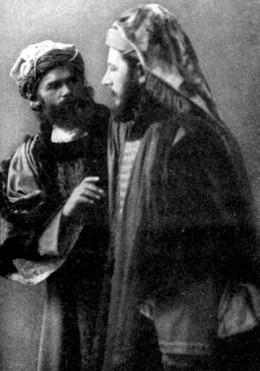 History
states that some Jews and Pontius Pilate were convinced of Jesus’s
truth. However, given the political sensitivities and the Sanhedrin’s
(body of Jewish elders) threats to escalate Jesus’s crime of attempting
to raise a Kingdom (which was really talk of a Heavenly Kingdom) in the
Roman Empire to Caesar himself, they would have to be careful and
secretive in a plot to save Jesus. Joseph of Arimathea is by some
accounts said to have been a wealthy and influential member of the
Sanhedrin who had harbored his conviction of Jesus as the true Messiah.
Joseph donated his own tomb for Jesus’s burial and is also known to be
the one who requested Jesus’s body from Pontius Pilate. Pilate,
interestingly, broke protocol and responded favorably to the request.
This may have been as part of the plot. Saint Nicodemus, also a member
of The Sanhedrin, is said to have been sympathetic to Jesus. In the
Gospel of John he assists Joseph of Arimathea in preparing Jesus for
burial. Pontius Pilate’s wife had a strong dream regarding Jesus and
warned her husband from opposing the man. In Matthew 27:19 she says to
Pilate, “Have thou nothing to do with that just man, for I have suffered many things this day in a dream because of him”.
Although Pilate under pressure eventually gives in to the demand of the
Jews opposing Jesus, he washes his hands in public and announces, “I am
innocent of the blood of this man. The responsibility is yours!”.
However, events such as setting the Day of Sabbath for crucifixion (when
bodies must be removed from the cross before nightfall), refusing to
approve a request to break Jesus legs to induce a quick death, and
deviating from protocol to give Jesus’s body to Joseph of Arimathea
indicate that Pontius Pilate may himself be participating or assisting
in such a plot.
History
states that some Jews and Pontius Pilate were convinced of Jesus’s
truth. However, given the political sensitivities and the Sanhedrin’s
(body of Jewish elders) threats to escalate Jesus’s crime of attempting
to raise a Kingdom (which was really talk of a Heavenly Kingdom) in the
Roman Empire to Caesar himself, they would have to be careful and
secretive in a plot to save Jesus. Joseph of Arimathea is by some
accounts said to have been a wealthy and influential member of the
Sanhedrin who had harbored his conviction of Jesus as the true Messiah.
Joseph donated his own tomb for Jesus’s burial and is also known to be
the one who requested Jesus’s body from Pontius Pilate. Pilate,
interestingly, broke protocol and responded favorably to the request.
This may have been as part of the plot. Saint Nicodemus, also a member
of The Sanhedrin, is said to have been sympathetic to Jesus. In the
Gospel of John he assists Joseph of Arimathea in preparing Jesus for
burial. Pontius Pilate’s wife had a strong dream regarding Jesus and
warned her husband from opposing the man. In Matthew 27:19 she says to
Pilate, “Have thou nothing to do with that just man, for I have suffered many things this day in a dream because of him”.
Although Pilate under pressure eventually gives in to the demand of the
Jews opposing Jesus, he washes his hands in public and announces, “I am
innocent of the blood of this man. The responsibility is yours!”.
However, events such as setting the Day of Sabbath for crucifixion (when
bodies must be removed from the cross before nightfall), refusing to
approve a request to break Jesus legs to induce a quick death, and
deviating from protocol to give Jesus’s body to Joseph of Arimathea
indicate that Pontius Pilate may himself be participating or assisting
in such a plot.
The Crucifixion
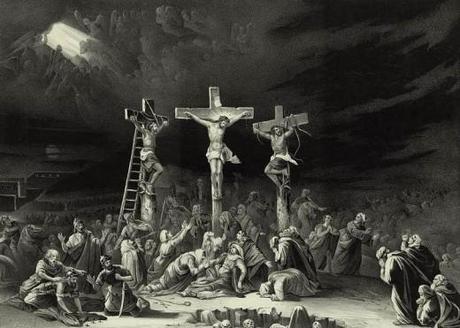 Crucifixion
on the cross is known to take a long time, even up to days. Sometimes,
to induce death the legs were broken and the resulting trauma, blood
loss and the inability to support the body’s weight would hasten death.
However, in the case of Jesus, the Gospels agree that none of these
things happened. The centurions tending to Jesus did not break his legs,
he was already thought to be dead. According to one account in John
19:29 a sponge filled with vinegar was held up to Jesus’s mouth. Was
this part of a plan to induce Jesus into a swoon so he may be taken for
dead? One of the centurions then had pierced Jesus’s side in an apparent
attempt to check for reaction if he is already dead. The account of
this event in John 19:34 clearly speaks of blood and water gushing
out—this does not happen in a body where the heart is no longer beating.
Lastly, perhaps the most convincing piece of evidence that Jesus was
alive and that there was a plot to save him is in John 19:39 where Saint
Nicodemus brings Aloe and Myrrh herbs about seventy five pounds in
weight. These are heeling herbs! The Aloe had long been used to treat
wounds. Why would they use such herbs unless they knew that Jesus was
still alive? In fact, historical record bears testimony to a medical
application known as Marham-e-Isa or ‘The Ointment of Jesus’. One such record is known as the Canon of Medicine by Avicenna.
Crucifixion
on the cross is known to take a long time, even up to days. Sometimes,
to induce death the legs were broken and the resulting trauma, blood
loss and the inability to support the body’s weight would hasten death.
However, in the case of Jesus, the Gospels agree that none of these
things happened. The centurions tending to Jesus did not break his legs,
he was already thought to be dead. According to one account in John
19:29 a sponge filled with vinegar was held up to Jesus’s mouth. Was
this part of a plan to induce Jesus into a swoon so he may be taken for
dead? One of the centurions then had pierced Jesus’s side in an apparent
attempt to check for reaction if he is already dead. The account of
this event in John 19:34 clearly speaks of blood and water gushing
out—this does not happen in a body where the heart is no longer beating.
Lastly, perhaps the most convincing piece of evidence that Jesus was
alive and that there was a plot to save him is in John 19:39 where Saint
Nicodemus brings Aloe and Myrrh herbs about seventy five pounds in
weight. These are heeling herbs! The Aloe had long been used to treat
wounds. Why would they use such herbs unless they knew that Jesus was
still alive? In fact, historical record bears testimony to a medical
application known as Marham-e-Isa or ‘The Ointment of Jesus’. One such record is known as the Canon of Medicine by Avicenna.Verse 4:157 of The Holy Quran says, “And their saying, ‘We did kill the Messiah, Jesus, son of Mary, the Messenger of Allah;’ whereas they slew him not, nor crucified him, but he was made to appear to them like one crucified; and those who differ therein are certainly in doubt about it; they have no knowledge thereof, but only follow a conjecture; and they did not convert this into a certainty”.
They would be in a state of doubt and uncertainty! Who wouldn’t? Jesus spends only a few hours on the cross, his legs are not broken, the spear wound gushes forth blood, heeling-herbs are gathered to tend to him. And, powerful members of The Sanhedrin as well Pontius Pilate had become his sympathizers and may have even hatched a plot to rescue him.
Also, in the new testament Jesus makes several appearances after the crucifixion. The apostle Thomas examines Jesus's wounds (John 20:25-27). Mark 16:8 appears to be revealing that the apostles were keeping the matter of the survival hush and nervous about being found out. And Matthew 28:10 is suggesting that there was a urgency to move Jesus and get him on an escape route. This painting found by Berenger Sauniere at Rennes le Chateau shows a risen moon (passover had begun) and could be messaging that Jesus was alive at the time
Post Crucifixion
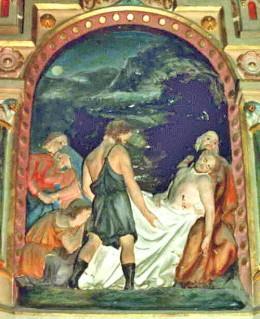 If
Jesus did in fact survive the crucifixion, a couple of main theories
have evolved over where he would have headed. Theory developers appear
to be in agreement that he would have to leave the jurisdiction of Judea
where he had mortal enemies. One theory has him accompanying a group
including Mary Magdalene to the South of France. This is based on events
surrounding a priest named Berenger Sauniere at Rennes le Chateau in
the South of France. Berenger is believed to have discovered documents
there that revealed Jesus having survived the crucifixion. Berenger was
apparently paid a great deal of money to keep the documents secret as he
conducted a rich renovation of the church there shortly after
discovering the parchments. If Berenger found any documents revealing
that Jesus was in Rennes le Chateau we do not know. But this artwork
painting above from the Church believed to have been set up by Mary
Magdalene shows Jesus being carried to the tomb with a risen moon--
meaning Passover had begun and per Jewish law the disciples would not
handle a dead body. Did Berenger discover evidence that Jesus survived
the crucifixion?
If
Jesus did in fact survive the crucifixion, a couple of main theories
have evolved over where he would have headed. Theory developers appear
to be in agreement that he would have to leave the jurisdiction of Judea
where he had mortal enemies. One theory has him accompanying a group
including Mary Magdalene to the South of France. This is based on events
surrounding a priest named Berenger Sauniere at Rennes le Chateau in
the South of France. Berenger is believed to have discovered documents
there that revealed Jesus having survived the crucifixion. Berenger was
apparently paid a great deal of money to keep the documents secret as he
conducted a rich renovation of the church there shortly after
discovering the parchments. If Berenger found any documents revealing
that Jesus was in Rennes le Chateau we do not know. But this artwork
painting above from the Church believed to have been set up by Mary
Magdalene shows Jesus being carried to the tomb with a risen moon--
meaning Passover had begun and per Jewish law the disciples would not
handle a dead body. Did Berenger discover evidence that Jesus survived
the crucifixion?However, another theory has developed over the past century that Jesus and his mother Mary (may God be pleased with her) in fact would have picked the route towards India. There would be several reasons for this. The Silk route to India offered speed and convenience. It also would take Jesus out of and some distance from the jurisdictions of the Roman Empire where he was now a condemned man. But the most powerful and convincing of reasons would be that Jesus would want to seek out the lost tribes of the Israelites to continue his ministry with them and fulfill his mission. In Matthew 15:24, Jesus says “I have only been sent to those lost sheep, the people of Israel”. And in John 10:16 he says “I have other sheep that are not of this fold, I must bring them also”. Are the features in this famous photograph of an Afghan girl on the cover of Nat'l Geographic magazine of someone who is of Jewish descent?
The Lost Sheep (tribes) of the Israelites
The twelve tribes of the Israelites remained coherent, neighborly, and loyal to the kingdoms of David and Solomon. However, the kingdom broke up after the reign of Solomon ended and owing to political conflicts and wars, several of the tribes were afflicted by circumstance and dispersed to escape persecution and unfavorable conditions. They came under Assyrian, Babylonian and Persian rule and ended up dispersing through the kingdoms. Even by studying current Etymology in the East Asian regions, we see current generations of these tribes. In Afghanistan you will find the Musa Kher, or tribe of Moses, Daud Kher and Suleiman Kher or the tribes of David and Solomon. The biological features of many Afghans as well as people in other areas of the Indian sub-continent are alien to the region and betray a Jewish origin such as the their fair complexion. The tribes themselves also claim to be the descendants of the Israelites. Several historical records exist to support this theory. One such account exists in Rauzat-us-Safa,
a historical Persian account which speaks of Jesus being in Nisibian
which is on the rout from Syria to Persia. Jesus is said to have
preached there and also had an encounter with the King of Nisibian who
had arrested some of Jesus’s disciples for preaching there. Eventually,
they are said to have accepted Jesus. A contemporary author known as
O.M. Burke wrote a book called “Among the Dervishes” based on a
community at the Persian and Afghan border in an area called Herat.
During the time he spent there he discovered the belief of the Dervishes
that Jesus had survived the crucifixion and escaped towards India. On
his route he had stopped in their community to preach there. They hold a
special fondness for him. Another record from a historical Hindu text
called Bhavishya Maha Puranas speaks of an encounter of King
Shalewahin in the Himalayas. The King apparently met someone with a
remarkable spiritual presence in the mountain who was of fair complexion
and wore white clothes. When the King asked him who he was he replied,
“I am the Messiah, born of a virgin”. He said he had come from another
land after having suffered there much.
An inspired image of Jesus and Buddha given the similarities of
their lives and scriptures leading many to believe that Jesus had to be
in India at some point
Several historical records exist to support this theory. One such account exists in Rauzat-us-Safa,
a historical Persian account which speaks of Jesus being in Nisibian
which is on the rout from Syria to Persia. Jesus is said to have
preached there and also had an encounter with the King of Nisibian who
had arrested some of Jesus’s disciples for preaching there. Eventually,
they are said to have accepted Jesus. A contemporary author known as
O.M. Burke wrote a book called “Among the Dervishes” based on a
community at the Persian and Afghan border in an area called Herat.
During the time he spent there he discovered the belief of the Dervishes
that Jesus had survived the crucifixion and escaped towards India. On
his route he had stopped in their community to preach there. They hold a
special fondness for him. Another record from a historical Hindu text
called Bhavishya Maha Puranas speaks of an encounter of King
Shalewahin in the Himalayas. The King apparently met someone with a
remarkable spiritual presence in the mountain who was of fair complexion
and wore white clothes. When the King asked him who he was he replied,
“I am the Messiah, born of a virgin”. He said he had come from another
land after having suffered there much.
An inspired image of Jesus and Buddha given the similarities of
their lives and scriptures leading many to believe that Jesus had to be
in India at some point
The Parallel with Buddhism
A remarkable mystery that has endured through history is the stark parallel of many aspects of Jesus’s and Buddha’s lives. Commentators and historians, including Biblical scholars, have attempted to explain this in a number of ways. Most agree that Jesus must have spent substantial time in India and in some way was exposed to or involved with Buddhism. Whether this happened before the crucifixion during what is known as the ‘lost’ or unknown years of Jesus’s life reportedly from age 13 to 30, or after the crucifixion may be open to debate. These parallels can be summarized as follows: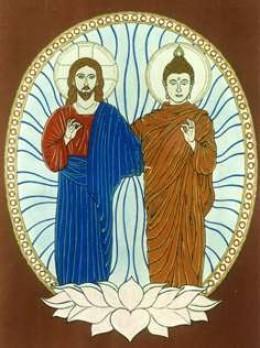 > Buddhist tradition mirrors the Christian account of the three
wise men who followed a star to Jesus’s place of birth. In Buddhism,
every time the search for the Dalai Lama begins, it does so with three
wise men setting out on the search.
> Buddhist tradition mirrors the Christian account of the three
wise men who followed a star to Jesus’s place of birth. In Buddhism,
every time the search for the Dalai Lama begins, it does so with three
wise men setting out on the search.> Both, Jesus and Buddha, are believed to be born of a virgin mother.
> Both scripture have their founder undertaking the forty-day fast.
> Jesus’s temptations by the devil in the desert are mirrored in Buddha’s life.
> The Gospels and Buddhist scriptures are remarkably similar in their use of parables as well as the accounts of those parables.
These are just the broad strokes. There are numerous similarities in details too. A lot of academic research has been conducted on this subject and many books are available.
 Buddha and Jesus:: Could Solomon Be the Missing Link?
Amazon Price: $6.80
Buddha and Jesus:: Could Solomon Be the Missing Link?
Amazon Price: $6.80
List Price: $13.99
Academia, Theory Founders and Developers
Much of the argument that I have compiled and stated is based on the research and development of this theory and argument in history by certain figures. Although a fair amount of academia now exists on the subject, below I will list a few key figures, their role and involvement.Nicholas Notovich was an aristocratic Russian Christian convert (from Judaism) who was travelling through northern India where he visited some Buddhist monasteries. Nicholas’s curiosity was piqued when he received some special treatment by the Buddhist Lamas as he rested with them a few days following a horse-riding accident. The Buddhist revealed to him that their fondness of him is due to a ‘white’ Buddha who had come to them from a foreign land hundreds of years ago. They showed him what they called ‘The St. Issa Scrolls’ which were that Buddha’s teachings. ‘Issa’ (pronounced e-e-s-s-a) means Jesus in Arabic. Notovitch had the scrolls translated to him, did some research and put out a book called ‘The Unknown Life of Jesus Christ’. Notovitch and The St. Issa Scrolls he claimed to have seen has been subject of much controversy. Notovitch was attacked for fabricating the evidence and playing a hoax. Several people after Notovitch have visited the Hemis Monastery and some claim to have viewed the manuscripts while other say they were told that they are not available or even do not exist anymore. Swami Abhedananda, a renowned Indian spiritual figure, read Notovitch’s account and decided to travel to the Hemis Monastery in attempt to disprove Notovitch’s story. However, he claims that he saw the St. Issa scrolls and instead became convinced that Notovitch had not played a hoax contrary to some opinions. In his book ‘Kashmir O Tibbate’, the Swami has a translation of many verses of The St. Issa Scrolls that are essentially the same as the work produced by Nicholas Notovich. However, recent attempts to view or procure the St. Issa scrolls have failed.

List Price: $12.95
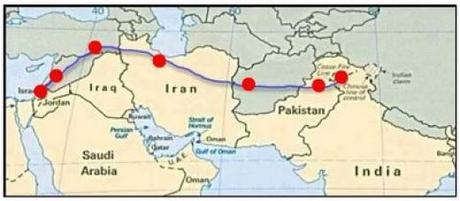

List Price: $10.00
German author Holger Kersten would be one of the more popular authors on the subject. He has written a number of books on this subject including "Jesus Lived in India", "The Original Jesus", and "The Jesus Conspiracy". He is credited with bringing this subject out of the halls of academia and to the wider public. Kersten’s thesis lays a greater emphasis on Jesus’s connection to Buddhism. Readers often comment on the remarkable detail and research chronicled in his
books.
List Price: $29.95
Author and researcher Suzanne Olssen is a passionate voice and word on this subject who is also known as ‘Indiana Sue’ for her daring expeditions through the Indian sub-continent in an era wrought with conflict and religious extremism. Olssen lays a lot of emphasis on genealogical research with the bloodline of Jesus. She has also done an amazing amount of research and is involved in something called the ‘DNA of God’ project where by with DNA sampling she hopes to prove that Jesus Christ is buried in The Roza Bal shrine in Srinagar, India. In Suzanne’s words, “After having lived there for so long and breathed it and absorbed it into every pore of my body . . . I have no doubt, no doubt, that is Jesus in that tomb”.

List Price: $19.98
Suzanne Olssen interview with Jerry Pippin show Part 1
- http://www.ipodshows.net/Jesus%20in%20Kasmir%20Pt%201%20(4-12-09).mp3
Suzzane Olssen interview with Jerry Pippin Part 2
- http://www.ipodshows.net/Jesus%20in%20Kashmir%20Pt%202%20(4-13-09).mp3

List Price: $19.95


The Roza Bal Shrine
The Roza Bal shrine is believed to be by many (including tens of millions of Ahmadi-Muslims) to be the final resting place of Jesus Christ. It is located in the city of Srinagar, region of Kashmir, in India. Mirza Ghulam Ahmad, the founder of the Ahmadiyya Muslim Community was the first person to have popularized the theory and his claim that one of the two persons buried at the tomb by the name of Yuz Asaf is in fact Jesus Christ. Yuz Asaf means ‘leader of the healed’ and according to another reference also means ‘Jesus the gatherer’. Ahmad commissioned his followers to research the site and its locale and procured a document with 500 signatures of locals who claimed that the tomb belongs to a prophet who came from a foreign land hundreds of years ago according to legend. In the first known historical writing where Roza Bal is mentioned in 1747 is known as ‘Story of Kashmir’ by Khawaja Muhammad Azam Didamari, Yuz Asaf is mentioned as a foreign prophet. The Roza Bal has the feet prints of Yuz Asaf imprinted on a piece of stone revealing wounds that could have been caused by an attempted crucifixion. The grave site is shared with a Muslim saint. However, the grave belonging to Yuz Asaph has been confirmed to be laid in the traditional Jewish method of pointing east-west. As of late, the Kashmir government has greatly restricted access to the shrine given heightened tourist interest and deterioration of the tomb. It was featured in The Lonely Planet guide book on India as a rumored burial site of Jesus Christ.Criticism
Over the years this theory has faced a lot of criticism. Nicholas Notovich’s book and claims have been called a hoax and fabrication. Supposedly, he did it to make money. Several western scholars have also come out and spoken against the theory which according to them is not based on any real evidence and at best can only be regarded as a myth. Critics include J. Gordon Melton, Simon Ross Valentine and Max Muller. Biblical scholars naturally maker references to the accounts in the Bible. However, this must also be taken as a theory. After all, none of the original Gospels mention Jesus’s ascension to heaven nor is it mentioned anywhere in the Quran. And several Christian luminaries such as Sir Isaac Newton and US President Jefferson have declared their rejection of the doctrine of the trinity, divinity of Christ, and the supposed ascension to heaven—this does not appear in The Gospel of Luke till two hundred years after the crucifixion and is highly suspected as a theocratic tactic of the Council of Nicea who consolidated the doctrine from among rival views.Conclusion
The question then is which theory does one believe in? The attractive feature of survival-crucifixion the Jesus-in-India theory is that it is supported by several dimensions despite if one wants to dispute or disregard these. There is evidence in historical record, in medical books, via study of genealogy and geography of the lost tribes, and via a comparative study of Buddhism and Christianity. It is a theory that agrees with conscience and which is supported by logic as well as rational dogma. It can be reconciled and it is also consistent with the observation of history and how God Almighty regulates the world and our lives—meaning no one has ever descended from Heaven or come back from the dead. Religious doctrine that boots a literal heavenly descent or return of a prophet of which there is plenty including Elijah in Judaism, and Jesus in Christianity and Islam, has never seen such a thing happen. It also pays due respect and regard to Jesus Christ (peace be upon him) and his prophecy of surviving a great predicament (the crucifixion) just like Jonah did and reaching the lost tribes.Original Article by
amer786 http://amer786.hubpages.com/hub/Did-Jesus-survive-the-crucifixion-And-continue-his-mission-with-the-lost-tribes-of-Israelites#
